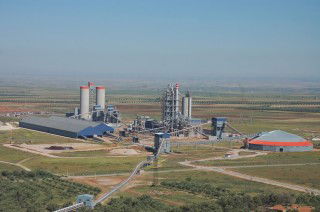A tightening supply-demand balance, rising prices and record industry profits have raised expectations of an improved scenario for China’s cement producers in 2019. A number of challenges remain on the supply-side, including tighter emissions control standards and the threat of imports into coastal markets, but the outlook for consumption is promising. By Fei (Grace) Chen, China Cement Association, China.
China’s cement industry produced 2.177bnt in 2018, reflecting YoY growth of 3.4 per cent, according to the country’s State Statistics Bureau. Clinker output increased 3.6 per cent to 1.422bnt. The highest production growth rates were recorded in the north and southwest regions, while output in the east and central-south areas remained stable (see Table 1).
|
Table 1: Chinese cement and clinker production, 2018 |
||||||
|
Region |
Cement production (Mt) |
YoY change |
Share of China total (%) |
Clinker production (Mt) |
YoY change |
Share of China total (%) |
|
North |
1699 |
8.47 |
7.80 |
1220 |
11.73 |
8.58 |
|
Northeast |
721 |
-5.66 |
3.31 |
5019 |
-2.43 |
3.53 |
|
East |
7025 |
3.13 |
32.28 |
4298 |
1.20 |
30.21 |
|
Central-south |
6241 |
3.72 |
28.67 |
3869 |
3.60 |
27.20 |
|
Southwest |
4407 |
6.44 |
20.25 |
3158 |
8.66 |
22.20 |
|
Northwest |
1673 |
-8.22 |
7.69 |
1180 |
-5.11 |
8.30 |
|
Total |
2177 |
3.04 |
100.00 |
1423 |
3.56 |
100 |
|
Source: China Cement Association |
||||||
Domestic demand, on the other hand, varied from region to region. Double-digit growth was reported in Tibet, Shanxi, Zhejiang and Hainan, while a double-digit contraction was seen in Sinkiang, Ningxia, Heilongjiang and Jilin.
Rising prices, record profits
According to the China Cement Association (CCA), the average price of PO42.5 cement in 2018 increased by 22 per cent YoY to reach a record level of CNY427/t (US$63.11/t). The improved pricing environment was able to be maintained throughout the year thanks to steady market demand and reduced supply. The sustained higher pricing levels resulted in the industry achieving record profits of CNY154.6bn in 2018 (see Figure 3).
Supply challenges
While China’s supply-demand dynamics improved in 2018 and prices and profitability were higher, cement manufacturers faced a number of other challenges.
Supply-side structural reform
As part of China’s ongoing supply-side structural reform the industry continued to face tougher environmental policies in terms of energy conservation, emissions reduction, off-peak production, comprehensive quarry improvements and transport management. However, as output was constrained, the oversupply situation eased.
New off-peak production challenges
New challenges also emerged in 2018. While most provinces (except Tibet) have been operating in line with off-peak production scheme for years, some local authorities have introduced ‘ultra-low’ emissions standards. Cement plants which “met the related conditions” were permitted to continue production through the winter months. This caused great confusion in the market and led to cut-throat competition – a situation which the government is being urged to address.
Further capacity additions to cause regional production pressures
At the start of 2019 there were 1681 NSP cement production lines with a clinker design capacity of 1.82bnt, while actual capacity was over 2bnt.
An additional 25Mta of capacity is expected to come on-stream this year, mainly in Guangdong, Guangxi, Fujian, Yunnan and Guizhou. Over 70 per cent of this volume is scheduled to come on-line in the first half alone.
Threat of clinker imports flooding coastal markets
Total clinker imports are estimated to have reached 10Mt in 2018 with the majority arriving from Vietnam, Thailand and South Korea.
Further increases are expected this year (see Figure 4). Due to off-season inflows of clinker, the price of clinker in the Yangtze River Delta region dropped significantly in early 2019. Going forward, the CCA predicts clinker from southeast Asia is likely to flood China’s coastal markets in 2019.
Outlook for 2019
Demand: promising and steady
China’s government has implemented a proactive fiscal policy, accelerated the construction of infrastructure projects, and made efforts to strengthen weak links in infrastructure and other areas. Moreover, infrastructure investment is expected to increase in 2019.
While regulatory measures on the property market will tighten further, any potential fall in investment in the housing sector is forecast to be small.
As a result, demand for cement is predicted to be stable. Across the north (ie, north, northwest and northeastern regions), consumption is forecast to increase thanks to infrastructure investment led by the Beijing, Tianjin and Hebei regions.
Supply focus
However, as property investment is expected to slip slightly and given the time lag in terms of newly-built infrastructure, the CCA forecasts a two per cent decline in cement production this year.
As the government is keen to improve the industry’s environmental performance, supply constraints are forecast to persist, particularly in the south.
The large cement companies in China are expected to focus on integrating their resources, optimise market structure, and improve capital structures and performance indicators. Expectations for positive developments in the Chinese market are at the top of their wish lists.
This article was first published in International Cement Review in April 2019.
